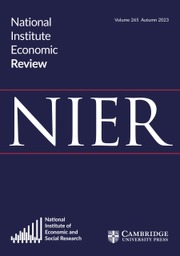No CrossRef data available.
Article contents
Policy easing in East Asia has been effective
Published online by Cambridge University Press: 26 March 2020
Extract
While quarterly output declines in some East Asian economies have been amongst the steepest in the world, the Asian and Australian banking systems have remained fairly insulated against the global financial crisis. While banks suffered from the freeze in interbank lending in the early stages of the crisis, there is little direct exposure in Asia and Australia to high-risk foreign assets, and banks have not tightened lending conditions as severely as they have in America and Europe. As a result, monetary stimulus in the East Asian and Australian economies has been more effective at reigniting growth, as banks have passed on most of the interest rate cuts to borrowers. Since mid-2008, interest rates have been cut by about 2 percentage points in China and Taiwan; 3¼ points in South Korea and 4¼ points in Australia, and this monetary easing has given an effective stimulus to these economies. In addition to monetary easing, many of the East Asian economies have implemented significant fiscal expansions, notably in both China and Japan, which should support a fairly rapid recovery in the entire region.
- Type
- Articles
- Information
- Copyright
- Copyright © 2009 National Institute of Economic and Social Research


